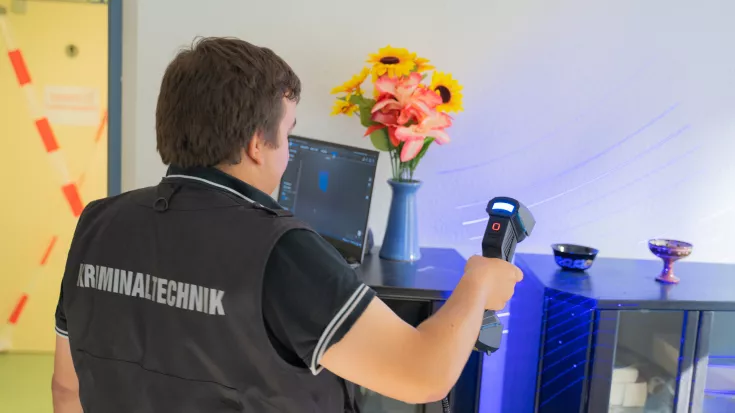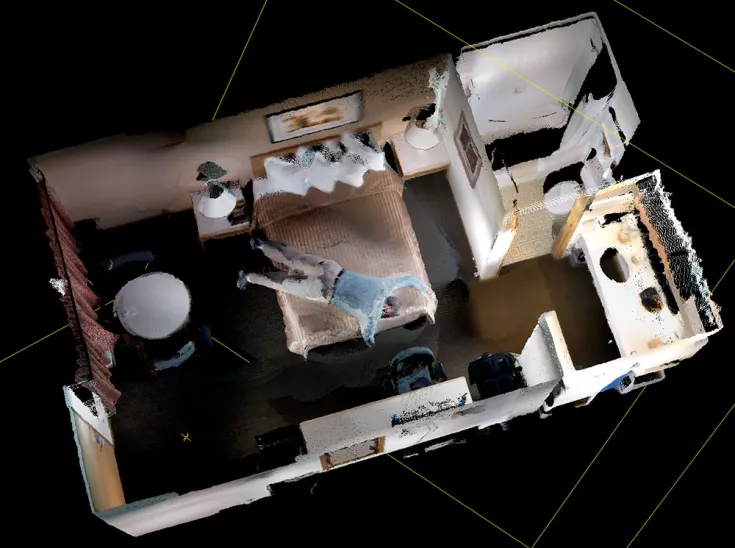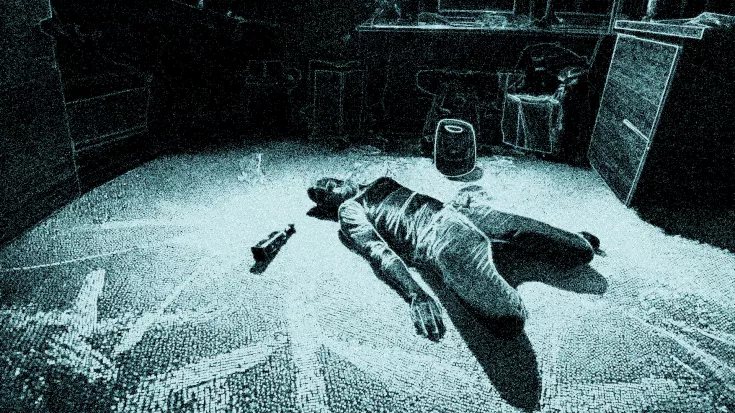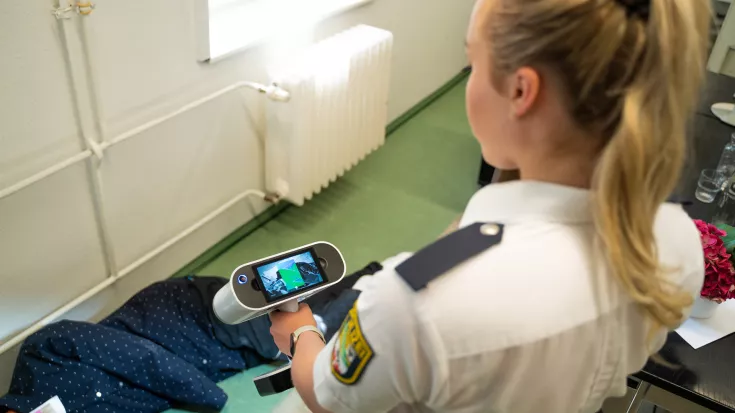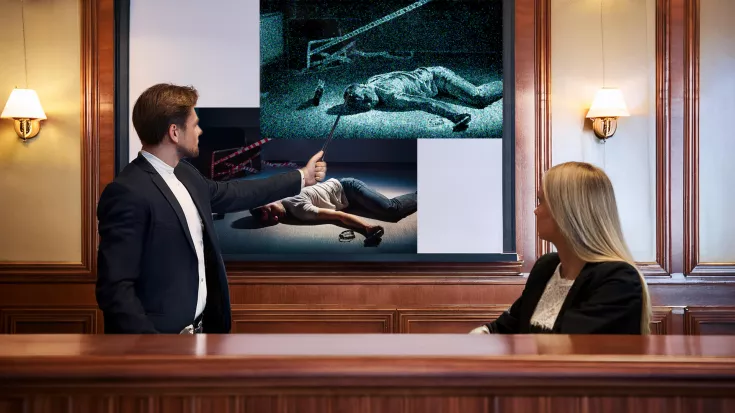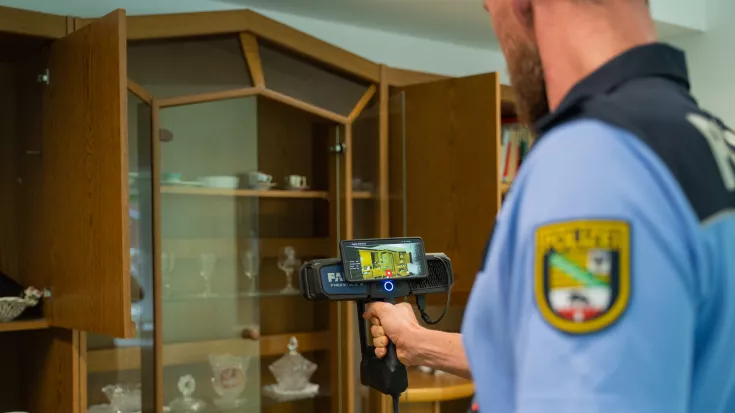Crime scene documentation in 3D using a scanner

TitleDocumenting crime scenes with millimeter precision - faster, more precise, safer
3D scanning is a modern technology that has been increasingly used in crime scene investigation and documentation in recent years. This technology makes it possible to capture and analyze crime scenes precisely and in detail in three dimensions.
Compared to traditional methods, such as photographic images or manual measurements, 3D laser scanning offers significantly more accurate and complete data collection. This has far-reaching advantages for the preservation of evidence, the analysis of crime sequences and documentation that can be used in court.
TitleAdvantages of 3D scanning for crime scenes
Precise & comprehensive capture
Capture every corner of the crime scene in the highest level of detail, including traces, objects and room structures.
Fast & discreet documentation
Reduce time on site with efficient data capture and minimize the impact on the surroundings.
Realistic visualization
Create digital 3D models that show the crime scene from every perspective, facilitating reconstruction.
Tamper-proof evidence
The digital data remains unchanged and guarantees a reliable basis for legal proceedings.
Long-term availability of data
All scanned information can be archived and reused at any time if required.
TitleDigitally reconstruct crime scenes
By capturing a crime scene in three dimensions, it can be “digitally frozen” and reconstructed in its entirety.
The scanners capture all objects, traces and even the smallest pieces of evidence exactly where they are, enabling a faithful and complete representation of the crime scene.
This is particularly valuable in order to be able to virtually reconstruct and analyze the crime scene at any time, even after it has been cleaned up or evidence has been removed.
Thanks to a virtual reconstruction of the crime scene, processes can be analyzed, perpetrators' paths can be traced and events can be simulated. These reconstructions can be decisive in clarifying the course of events.
TitleSecuring evidence for eternity
3D laser scanning can be used to capture not only homicides, but also traffic accidents or other complex crime scenes.
The entire environment, including all traces and their original positions, can be documented. This includes, for example
- blood,
- fibers,
- weapons,
- shoe prints,
- bullet holes,
- tire prints,
- and many more.
The scanner works quickly and can measure large crime scenes in a short time. This is particularly advantageous in situations with high time pressure or environmental influences such as weather or darkness.
TitlePrecision & wealth of detail
Manual measurements or two-dimensional photographs often have the problem that certain details are overlooked or inaccurately depicted, which can lead to incorrect interpretations. 3D laser scanning, on the other hand, provides exact and highly detailed models of a crime scene. Every little detail is captured, which can be particularly crucial when analyzing crime scene evidence.
For example, ballistics experts can analyze the trajectory of the projectile or investigators can reconstruct the position of victims and perpetrators in relation to each other. This facilitates the investigation and helps to verify or refute hypotheses about the course of the crime.
The 3D data can be used to analyze correlations and create well-founded reports. The data can also be combined with other forensic results to obtain a comprehensive overview.
TitleLaser scanning for various analyses
The detailed reconstruction of the spatial arrangement of a crime scene allows conclusions to be drawn about the dynamics of the crime scene.
Trajectory analysis
In trajectory analysis, the laser scanner serves as a new or additional capture method. In the past, trajectories were determined using rods with threads or laser pointers, which were inserted into bullet holes. With the laser scanning method, the trajectories are represented by digital shot paths.
Blood spatter analysis
The laser scanner is also used for blood spatter analysis. Here, photogrammetry, laser scanning and mathematical trajectory analysis are combined.
Determination of offender size
A similar approach is used to determine the size of offenders using laser scanners. Here, inventory data from video surveillance is combined with subsequent scans to determine the size of suspects.
TitleVirtual walk-throughs & court presentations
A key advantage of 3D crime scene documentation is the ability to virtually walk through the crime scene after it has been captured.
This allows investigators, as well as public prosecutors and judges, to “visit” the crime scene in the courtroom and view important details in a vivid and clear presentation. Complex contexts can be uniquely clarified in this way.
This approach improves the understanding of the course of the crime and increases the evidential value of the presentation in the legal process.
TitleTime & cost savings
Scanning a crime scene usually only takes a few minutes, depending on the size and complexity of the crime scene. This saves a considerable amount of time compared to conventional crime scene surveying methods.
In addition, the collected data can be re-interpreted at any time or used for additional analysis without having to re-enter the crime scene.
TitleDigital long-term archiving
The scanned data can be archived securely and for the long term. Even years after the incident, the data can be accessed to carry out additional analyses or re-examine evidence. This digital archiving is particularly important for unsolved cases or reopenings.
As the data is available digitally, there is no physical wear and tear or degradation of the information, as might be the case with traditional crime scene documentation.
TitleAlways up to date
Laserscanning Europe GmbH teaches police officers, investigators and technical users the basics of metrology and the application of scanning technology.
Eric Bergholz, CEO of Laserscanning Europe GmbH, is the European representative of the International Association of Forensic and Security Metrology (IAFSM) and keeps an eye on developments.
In the video, he reports live from IAFSM 2024 in San Diego. At this exciting conference, there were numerous specialist presentations on the analysis of scan data from accidents and crime scenes. One experiment on the test site was particularly impressive: an artificially constructed apartment was set on fire in order to record it both before and after the fire with a 3D laser scanner.
